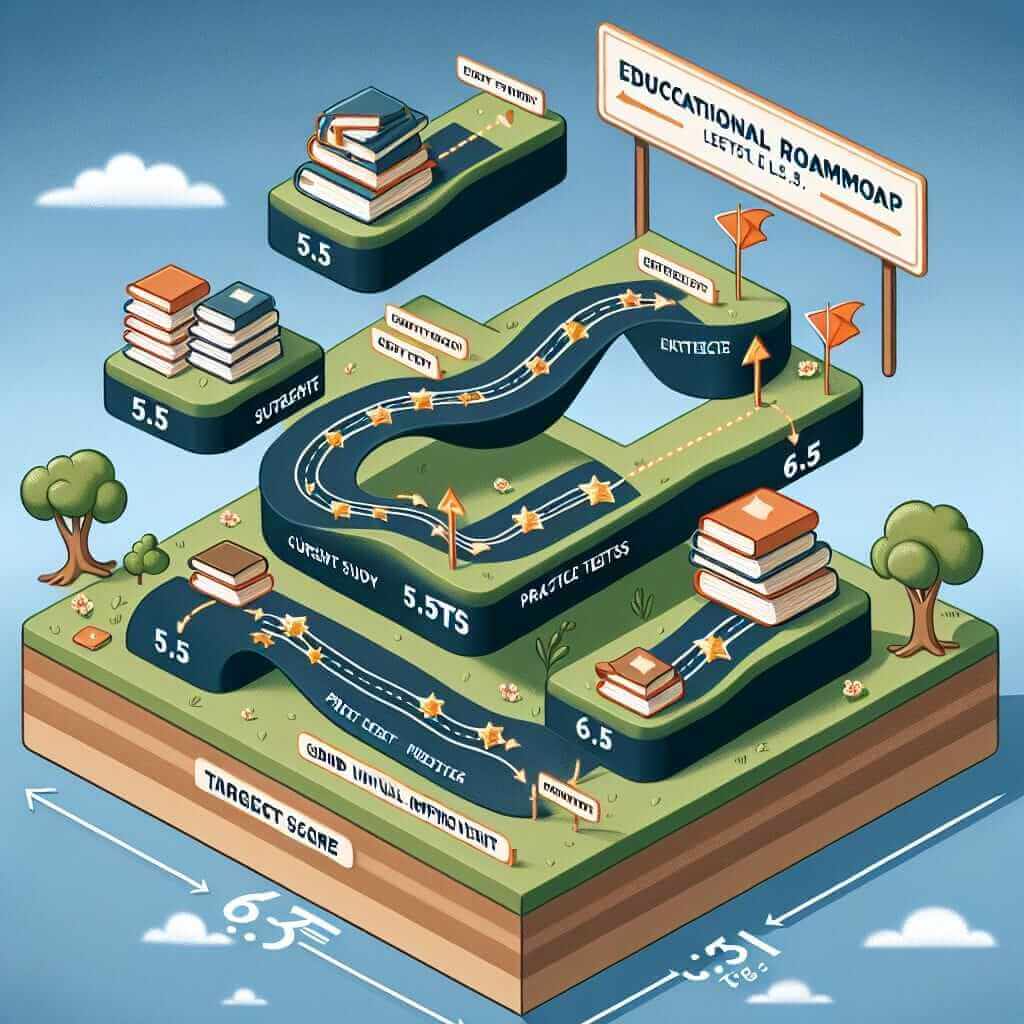As an IELTS instructor with over two decades of experience, I often encounter students asking, “How long will it take me to get from a band 5.5 to a 6.5?” It’s a common question with no one-size-fits-all answer. However, understanding the factors at play can give you a realistic timeframe and a roadmap for improvement.
Nội dung bài viết
- Understanding the Gap
- Factors Influencing Your Journey
- 1. Your Current Level and Learning Style:
- 2. Study Intensity and Consistency:
- 3. Study Method and Resources:
- 4. Exposure to English:
- Realistic Timeframe: A Rough Estimate
- Tips for Expediting Your Progress:
- 1. Identify Your Weaknesses:
- 2. Focus on Fluency and Coherence (Speaking & Writing):
- 3. Expand Your Vocabulary and Grammar:
- 4. Practice Regularly with Past Papers:
- 5. Seek Feedback and Guidance:
- Example from Real IELTS:
- Conclusion:
Understanding the Gap
Firstly, let’s acknowledge that a 1 band score increase in IELTS represents a significant jump in language proficiency. A 5.5 signifies a “modest user” who can handle basic communication, while a 6.5 indicates a “competent user” with greater fluency, accuracy, and a wider range of vocabulary and grammar.
Factors Influencing Your Journey
The time required to bridge this gap varies drastically depending on several key factors:
1. Your Current Level and Learning Style:
Are you a quick learner or do you need more time to grasp new concepts? Honestly assessing your learning style, strengths, and weaknesses is crucial.
2. Study Intensity and Consistency:
The more time and effort you dedicate to focused study, the faster your progress will be. Consistent, daily practice trumps sporadic bursts of study.
3. Study Method and Resources:
Utilizing effective study materials and strategies tailored to your weaknesses is paramount. Working with an experienced tutor can accelerate your progress significantly.
4. Exposure to English:
Regularly immersing yourself in English through reading, listening, speaking, and writing outside of structured study is essential for natural language acquisition.
Realistic Timeframe: A Rough Estimate
While individual experiences vary, here’s a general guideline:
- Dedicated Effort (20+ hours per week): 3-6 months
- Moderate Effort (10-20 hours per week): 6-12 months
- Casual Effort (Less than 10 hours per week): 12+ months

Tips for Expediting Your Progress:
1. Identify Your Weaknesses:
Analyze your previous IELTS scores and pinpoint the areas needing the most attention.
2. Focus on Fluency and Coherence (Speaking & Writing):
Practice speaking spontaneously on various topics and structuring your writing logically with clear ideas and transitions.
3. Expand Your Vocabulary and Grammar:
Actively learn new vocabulary and grammatical structures, ensuring you understand their correct usage in different contexts.
4. Practice Regularly with Past Papers:
Familiarize yourself with the IELTS format and timing by taking regular mock tests under exam conditions.
5. Seek Feedback and Guidance:
Regular feedback from experienced IELTS tutors or teachers can pinpoint areas for improvement and provide personalized guidance.
Example from Real IELTS:
Many students struggle with the Writing Task 2 essay. Moving from a 5.5 to a 6.5 requires a significant improvement in task response, coherence, vocabulary, and grammar accuracy. This might involve mastering complex sentence structures, learning topic-specific vocabulary, and understanding how to present a balanced argument.
Conclusion:
Improving your IELTS score from 5.5 to 6.5 is a challenging but achievable goal. Remember, it’s a marathon, not a sprint. Consistent effort, strategic study, and expert guidance can significantly accelerate your progress and help you achieve your desired score within a realistic timeframe. Good luck!